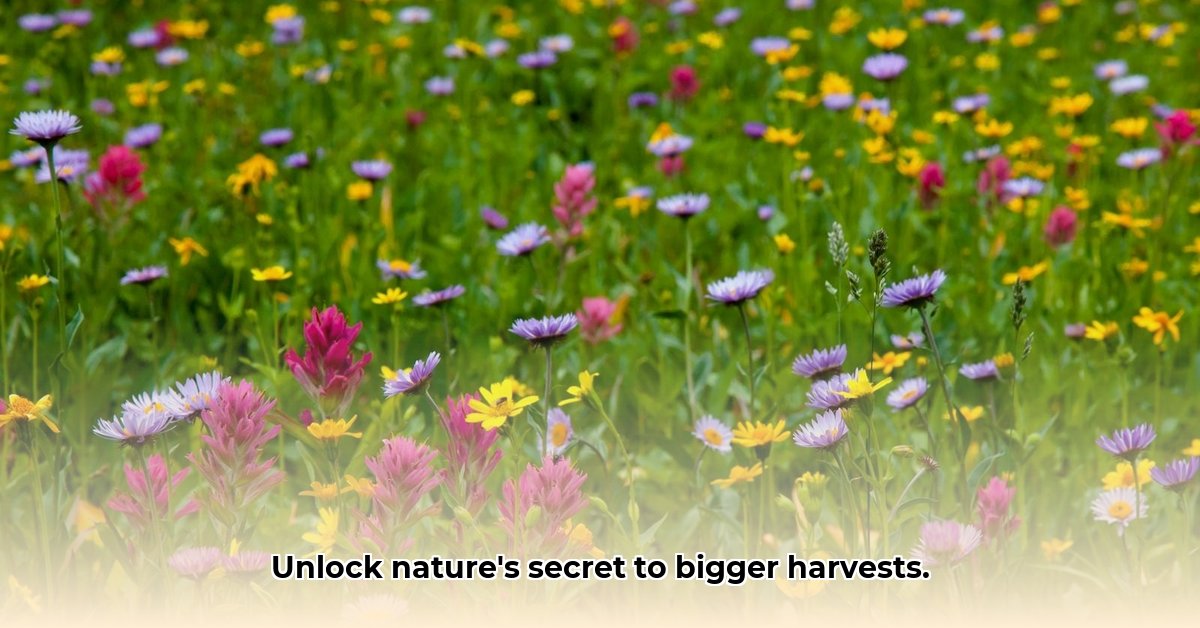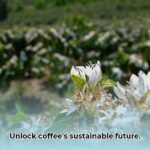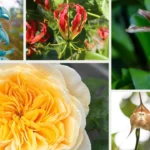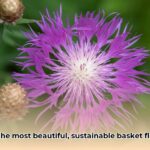Want to make your farm more successful? Flower grasslands aren’t just pretty; they hold secrets to help farmers thrive. This guide shows how to use native grassland plants for a healthier, more profitable, and resilient farm. Discover how these plants improve soil, conserve water, and naturally control pests, leading to a better harvest. Learn more about pollinator importance.
Flower Grasslands: Nature’s Secret to Bountiful Harvests
Flower grasslands, vibrant ecosystems, offer sustainable ways to boost crop yields. Ploughing them under for single crops causes soil problems, fewer beneficial insects, and climate change vulnerability. Integrating flower grassland plants into farming works with nature by creating diverse and resilient agroecosystems.
Untapped Riches in Flower Grasslands
Focusing on single crops leads to soil erosion, nutrient depletion, and increased vulnerability to drought. Flower grasslands act like natural sponges, soaking up rainwater, reducing irrigation needs, and saving money. The deep root systems of grassland plants improve soil structure, increasing its capacity to retain water and nutrients.
Flower grasslands teem with life, including beneficial insects like ladybugs that eat pests, and pollinators like bees, which are vital for crop production. This natural pest control reduces the need for harmful chemical pesticides, promoting a healthier environment and reducing costs. Diverse plant communities also support a wider range of soil microorganisms, further enhancing soil health and nutrient cycling.
Integrating Flower Grasslands into Your Farming Practices: A Step-by-Step Guide
Integrating flower grasslands into your farm can be broken down into these steps:
- Soil Assessment: Know Your Land: Get a comprehensive soil test to understand nutrient levels, pH, organic matter content, and water retention capacity. This detailed analysis helps in selecting the right grassland plants and tailoring management practices to your specific soil conditions.
- Strategic Planting: Diversify Your Approach: Introduce native grassland plants as cover crops, rotate them with cash crops, or establish permanent buffer strips. Leguminous flowers, for example, add nitrogen to the soil through symbiotic relationships with bacteria, reducing the need for synthetic nitrogen fertilizers. Consider planting a mix of grasses, legumes, and forbs to maximize biodiversity and ecosystem benefits.
- Smart Crop Selection: The Right Plant, Right Place: Choose crop varieties that are well-suited to thrive in your climate and soil type to maximize yield and minimize resource needs. Consider factors such as disease resistance, drought tolerance, and nutrient requirements when selecting crop varieties. Additionally, explore intercropping systems where different crops are grown together to enhance resource utilization and reduce pest pressure.
- Natural Pest Control: Let Nature Do the Work: A diverse plant mix attracts beneficial insects, such as ladybugs, lacewings, and parasitic wasps, which prey on common agricultural pests. This reduces the need for chemical pesticides, promoting a healthier environment and reducing input costs. Creating habitat for pollinators is also key to maximize yields.
- Monitoring and Adaptive Management: Regularly observe crops and grassland plants, adjusting management practices as needed. This is an ongoing learning process that requires careful observation and a willingness to adapt. Monitor soil health indicators, pest and disease pressure, and plant growth to inform management decisions. Consider using remote sensing technologies, such as drones or satellite imagery, to monitor crop and grassland health over larger areas.
Challenges and Considerations: Navigating the Transition
Introducing new plants requires careful management to minimize competition with crops and prevent the spread of invasive species. Ongoing research is exploring the best grassland integration practices, and farmers should stay informed about the latest findings. Consider implementing integrated weed management strategies that combine cultural practices, such as cover cropping and crop rotation, with targeted herbicide applications.
A Team Effort: Collaboration for Success
Integrating flower grasslands requires collaboration between farmers, scientists, policymakers, and conservation organizations. Sharing knowledge, experiences, and resources is vital to success. Promoting sustainable land management through community resources and research collaboration is key to foster innovation and accelerate the adoption of best management practices.
The Future of Farming: A Blossoming Partnership
Integrating flower grasslands offers a path to sustainable food production through naturally resilient and fertile agroecosystems. The future of farming may depend on this blossoming partnership with nature, as farmers increasingly recognize the importance of biodiversity and ecosystem services for long-term productivity. Embracing this approach can enhance food security, protect the environment, and support rural communities.
How to Integrate Native Grassland Plants into Sustainable Farming Practices
Native grassland plants are vital for soil health, water conservation, and biodiversity. Integrating them builds a resilient and productive farming system. Consider incorporating flowering plants, also known as forbs, as they provide diverse benefits and attract pollinators.
Key Takeaways:
- Boosting biodiversity attracts beneficial insects and pollinators, improving crop health and potentially increasing yields by 10-20%.
- Improved soil health leads to better water retention and reduced erosion (studies show up to a 92% reduction in soil loss in test plots).
- Strategic grassland plant integration can increase farm profitability by reducing input costs and improving crop quality.
Understanding the Benefits
Think of native grassland plants as keystone species for your farm’s ecosystem. They attract beneficial insects for natural pest control, improve soil structure for better water infiltration and reduced runoff, and enhance nutrient cycling. Deep root systems create channels for water and air, preventing soil erosion, improving soil aeration, and leading to healthier crops and potentially higher yields.
Planning Your Integration
Assess your farm’s unique conditions: soil type, climate, and native plant species. Consult with local experts to identify appropriate species and planting strategies. Choose the right plants carefully, considering your current agricultural practices and long-term goals. Integrate flowering grassland plants into crop rotations, establish buffer strips along field edges, or create pollinator habitats. A holistic approach with regular monitoring and adjustments is key to maximizing benefits and minimizing potential challenges.
Actionable Steps for Integration
- Conduct a thorough site assessment: Analyze your soil, climate, topography, and existing vegetation to identify needs and opportunities. Consider conducting a soil test to assess nutrient levels, pH, and organic matter content.
- Select appropriate native plants: Choose species that are adapted to your specific conditions and align with your farming goals. Prioritize drought-resistant varieties in arid climates and species that provide specific ecosystem services, such as nitrogen fixation or pollinator habitat.
- Develop an implementation plan: Decide where and how you’ll integrate native plants into your farming system. Consider crop rotations, buffer strips, hedgerows, or pollinator gardens. Map out planting locations and timelines, and develop a budget for seed, equipment, and labor.
- Start small, then scale up: Begin with pilot projects to test different approaches and learn what works best on a small scale before wider implementation. This allows you to fine-tune your strategies and minimize potential risks.
- Monitor and adapt: Regularly observe plant growth, soil health, water infiltration, and pest pressure to adjust your approach over time. Keep detailed records of observations and adjustments to refine strategies and track progress.
- Explore potential market opportunities: Depending on your area and the species you plant, there may be local markets for seeds, native plants, honey, or other products that you can sell to diversify your income streams.
Addressing Potential Challenges
Competition with crops and establishing native plants can be challenging and may take time and effort. Implement effective weed management strategies and provide adequate irrigation during establishment. Perseverance and careful planning yields long-term results. Remember that the long-term environmental and economic benefits outweigh the initial setbacks.
Looking Ahead: A Sustainable Future
Integrating native grassland plants is a move toward resilient and profitable agriculture. Partner with nature and create mutually beneficial relationships between crops and the ecosystem. Embrace the learning curve; celebrate small wins, and you’ll find yourself on a path to a healthier, more productive, and sustainable farm. By adopting these practices, you can contribute to a more resilient and environmentally sound agricultural system.
Grassland Plant Diversity and Sustainable Agricultural Practices
Understanding how to balance yield with Grassland Plant Diversity is crucial for long-term sustainability. Intensive grassland management decreases plant diversity, impacting yields differently across locations due to factors like climate and farm size. Managing grasslands sustainably benefits both biodiversity and crop production, promoting resilient and productive agroecosystems.
Key Takeaways:
- Farmers are 12% more likely to adopt sustainable grassland management practices when they have access to tailored advice and support.
- Integrating diverse grassland management strategies improves overall ecosystem health, enhancing soil fertility, water quality, and carbon sequestration.
- Farmers, policymakers, and researchers all play crucial roles in achieving sustainable grassland management, fostering innovation and promoting widespread adoption.
Understanding the Biodiversity-Yield Trade-off
A vibrant grassland tapestry is a healthy one. Intensive farming reduces Grassland Plant Diversity, creating an imbalance that can negatively impact long-term productivity. The biodiversity-yield trade-off varies based on climate, soil type, management practices, and the specific species involved. A monoculture crop lacks the resilience and adaptability of a diverse ecosystem.
The Spatial Heterogeneity of Grassland Management
The impact of intensive grassland management varies significantly across different landscapes. A farmer in a dry region may experience significant biodiversity loss and reduced water availability, while one in a wetter climate may see less immediate impact. Farm size, field structure, and landscape context also play a role in determining the effects of management practices on biodiversity and yield. Utilizing location-specific models and decision support tools can help optimize management practices to maximize both yield and biodiversity.
Integrating Diverse Grassland Management Strategies
A balanced approach is needed which incorporates grasslands with varying management intensities to preserve biodiversity in a larger agricultural landscape. This increases ecosystem services, such as pollination, pest control, and nutrient cycling, benefitting both farmers and the environment by creating
- Discover Fermentation Revolution: The Health Benefits of Kimchi: Sustainable Farming Practices - July 30, 2025
- Discover Living Crystals: The Giant Gypsum Formations in Naica’s Cave: A Geological Marvel - July 30, 2025
- Master Molecular Gastronomy: The Science That Turns Your Kitchen into a Lab: Beginner-Friendly Recipes - July 30, 2025
















